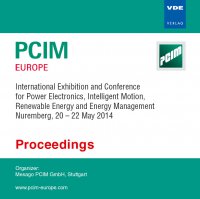Novel Improved Loss Prediction for Multi-Resonant Converter Optimization Based on the First-Harmonic- Approximation
Conference: PCIM Europe 2014 - International Exhibition and Conference for Power Electronics, Intelligent Motion, Renewable Energy and Energy Management
05/20/2014 - 05/22/2014 at Nürnberg, Deutschland
Proceedings: PCIM Europe 2014
Pages: 7Language: englishTyp: PDF
Personal VDE Members are entitled to a 10% discount on this title
Authors:
Oeder, C.; Goettle, J.; Duerbaum, T. (University Erlangen-Nuremberg, Germany)
Abstract:
The first harmonic approximation (FHA), also known as fundamental mode approximation or sinusoidal analysis, is a widely used, very appropriate and easily applicable technique to analyze resonant converter topologies. It is no exaggeration to say that the FHA plays a major role in today’s establishment and success of (multi-)resonant converters. Though the method exhibits some insufficiency, the insight and experience, which the analysis results provide, are extremely useful and valuable. As it is exactly the simplicity, which makes the FHA that powerful, any improvement or refinement of the method should be done with care not to destroy its greatest benefit. Keeping that in mind, the proposed improvement has been developed to provide a tremendous gain in accuracy while preserving simplicity and a low computational effort. More specifically, the improvement is based on the same idea as the fundamental mode approximation considering only sinusoidal or partly sinusoidal current waveforms. The gain in accuracy is based on a more realistic current waveform, which in turn provides a more accurate converter optimization. In the following, the derivation and basic assumptions of the proposed FHA improvement will be explained in detail. A comparison of the original FHA, the improved FHA and the exact steady-state solution for an exemplary multi-resonant LLC converter will justify the proposed improvement.


